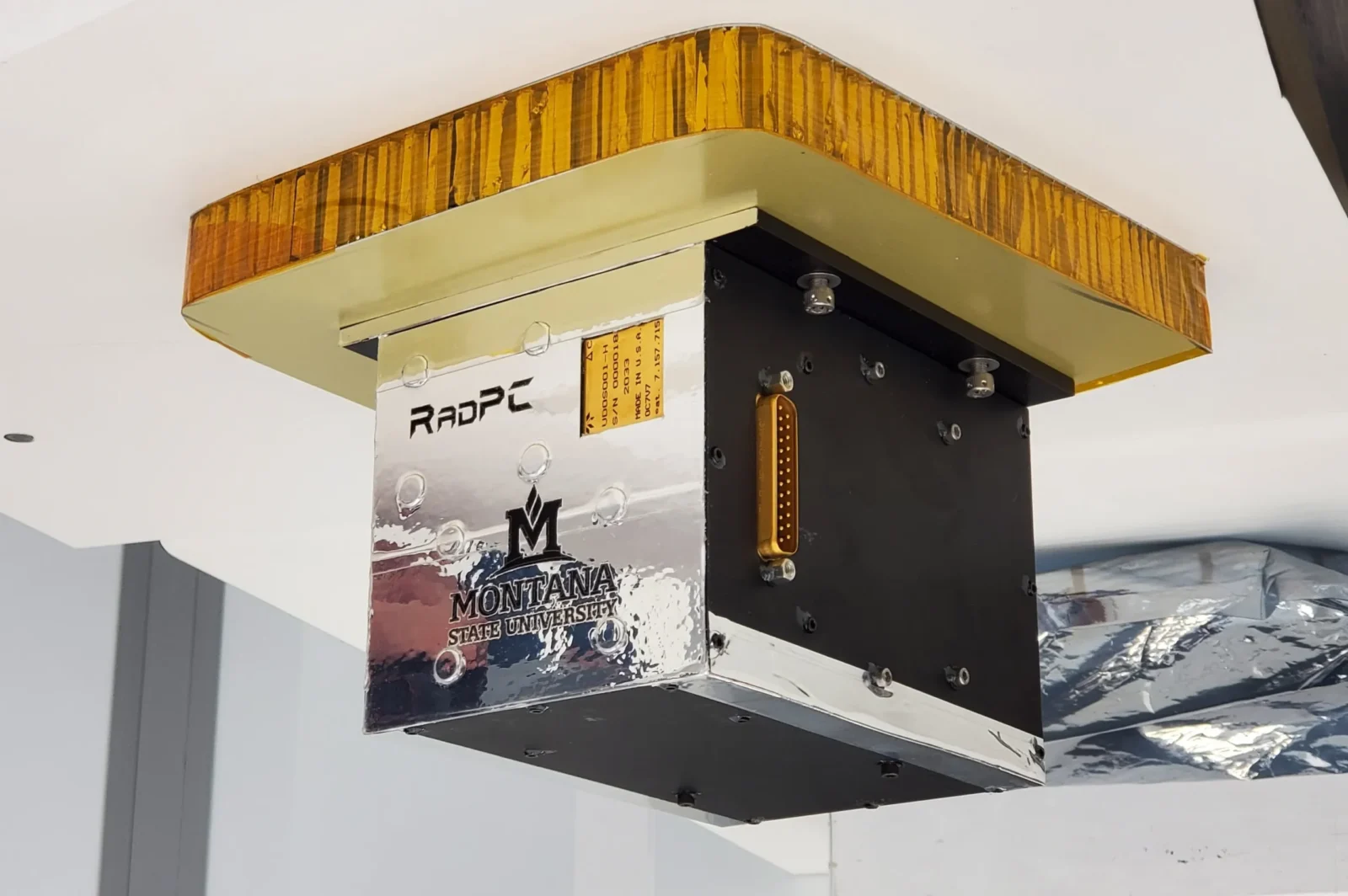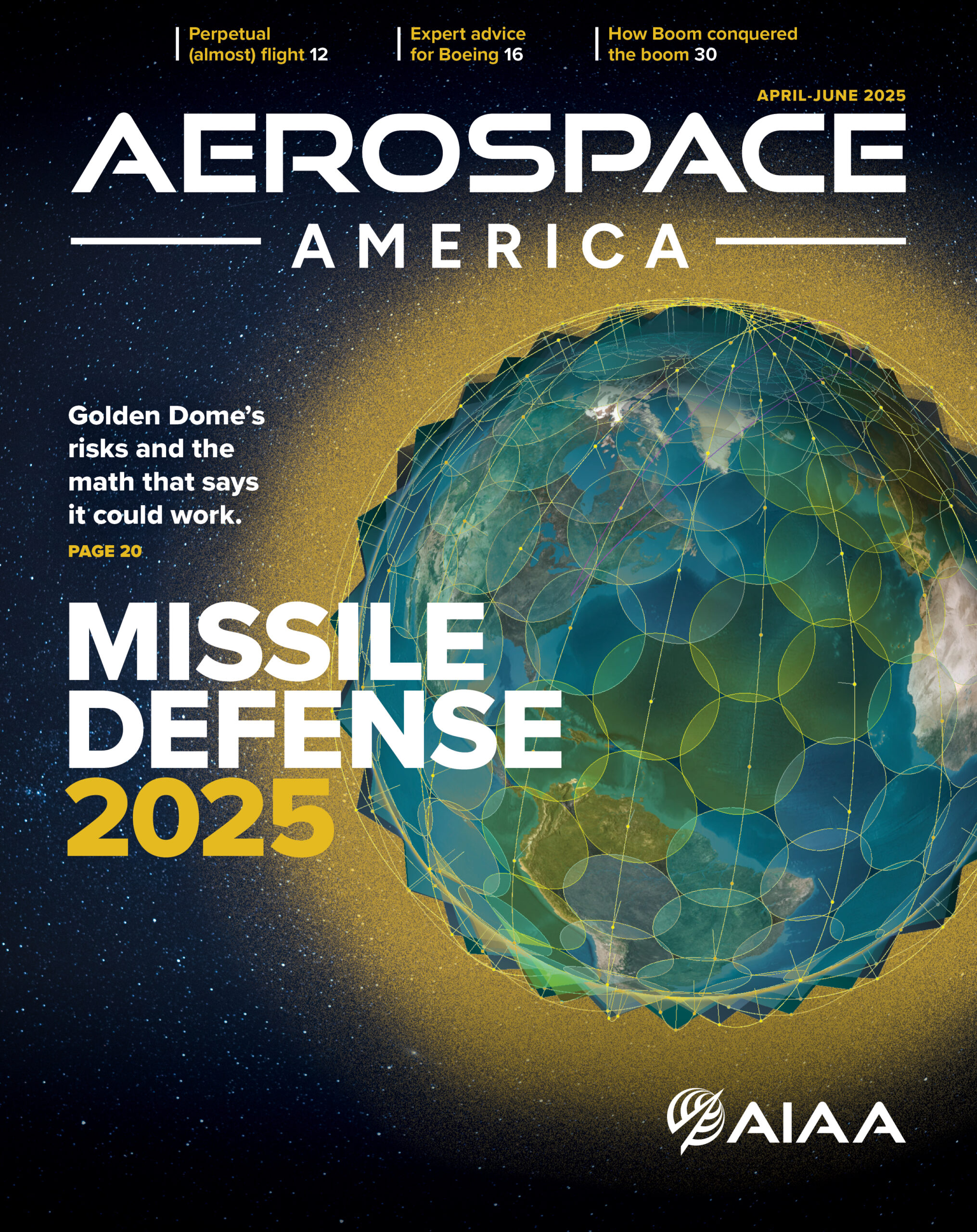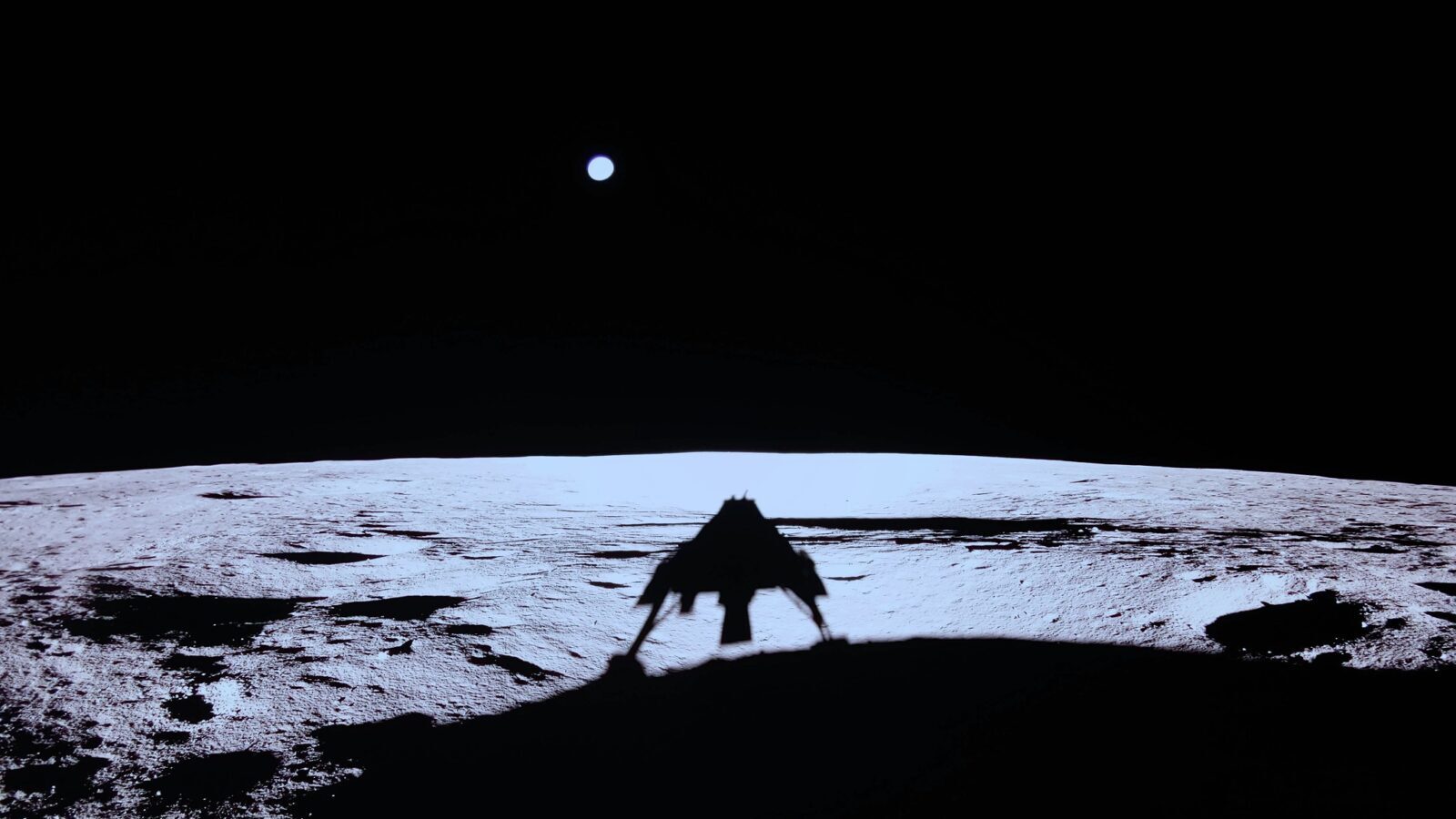Stay Up to Date
Submit your email address to receive the latest industry and Aerospace America news.
Results so far indicate the lightweight design withstood high levels of radiation
On March 16, Firefly Aerospace’s Blue Ghost lander made its last transmission from the surface of the moon, marking the end of the Texas company’s first lunar mission. But the next phase of work was just beginning for a team of Montana State University researchers whose radiation-resilient computer was among the lander’s payloads.
Named RadPC, the Rubik’s Cube-sized prototype computer was the culmination of 18 years of research by Brock LaMeres, a computer engineering professor at Montana State, and dozens of his Ph.D. students. Starting with its mid-January launch aboard a Falcon 9, RadPC operated consistently for eight weeks aboard Blue Ghost, six of those while the lander was in transit to the lunar surface. Blue Ghost’s orbital trajectory took it through the Earth’s Van Allen radiation belts, where the computer was exposed to the equivalent of eight years of radiation at the Earth’s surface in eight days. Also during the journey, RadPC operated through a blast of X-rays caused by a coronal mass ejection from the sun, and during its two weeks on the lunar surface, it operated through a greater-than-expected range of temperatures, from minus 20 degrees to 35 degrees Celsius.
“It just worked all the time,” says LaMeres. Since Blue Ghost’s final transmission, LaMeres and his students have been sorting through RadPC’s performance data. They’re not done yet, but so far, “we’re struggling to find anything wrong,” LaMeres told me in late March.
During the eight-week mission, LaMeres and managers for the other nine payloads aboard Blue Ghost were kept in constant contact with Firefly’s mission managers via an audio link, like an always-on Zoom call without the video. He brought a laptop with the link to his classes and even kept it on his nightstand while sleeping, alternating shifts with some of his students, listening for any reference to their “RadPC” call sign.
“You’d perk up and listen, and you’d have to reply. It was similar to air traffic control,” he says.
RadPC was designed to operate continuously through “single event effects” that can cause a computer to lock up and have to reboot due to large blasts of radiation, such as those from high-energy protons emanating from the sun. To guard against such events, designers typically build mission-critical computers with oversized circuits and specialized materials that can resist this radiation, but this often leads to more expensive computers that operate more slowly. With RadPC, LaMeres and his students took a different tack, using off-the-shelf computer cores and redundant hardware that keep the computer running while any radiation-damaged circuits are autonomously taken offline and reconfigured.

Now that RadPC has proven it can stay online through blasts of radiation in space, LaMeres wants to put an operational version of the computer on another spacecraft and “actually run something that’s a real task for a mission.” One option is an Earth-imaging satellite, for which the computer could process and analyze images in real time on orbit, saving mission controllers from having to downlink them for processing on the ground.
LaMeres also plans to apply to NASA and commercial entities to get a RadPC aboard one of the robotic lunar landings planned over the next several years. In that scenario, the computer could help a lander analyze images of the surface before it touches down.
“The opportunity for RadPC is to be very, very quick in identifying rocks and craters so that the lander can do a maneuver at the last minute to avoid them,” LaMeres says. “We could potentially do it faster and more reliably and at a lower power than current solutions, and so we might be able to make landing more reliable for future landers.”
With RadPC’s Blue Ghost success, LaMeres is also making the computers available for purchase through Resilient Computing, the company he started with two of his students to commercialize RadPC. To that end, they’ve begun developing software that would allow a customer to operate RadPC without advanced programming knowledge.
“We can do a bunch of crazy stuff in the research lab at a university that is very impractical. But how do you actually put it into something that an engineer could use?” LaMeres asks. “We want to make software functions where the user just says: ‘Use this,’ and all of a sudden the magic happens.”
Header photo: The shadow of the Blue Ghost lander on the lunar surface. Credit: Firefly Aerospace
About Keith Button
Keith has written for C4ISR Journal and Hedge Fund Alert, where he broke news of the 2007 Bear Stearns hedge fund blowup that kicked off the global credit crisis. He is based in New York.
Related Posts
Stay Up to Date
Submit your email address to receive the latest industry and Aerospace America news.




